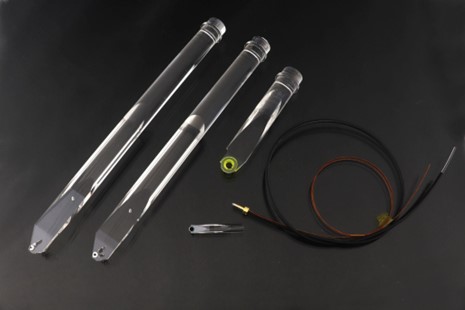Crytur is a long-standing supplier of detection units that are installed in various types of TESCAN microscopes. During the cooperation, the monthly deliveries gradually climbed to the current approximately 50 units. “We expect a further increase in this number this year, given the growing demand for our devices. Recently, we have also been trying to expand our cooperation in the field of precision machining,” says Filip Černý, Head of Production.

Crytur is not just a partner, they are also a customer. In fact, they were one of TESCAN’s most long-standing customers before becoming a supplier, and last year they acquired their third TESCAN electron microscope.
Historically, the first system delivered was PROXIMA 25 years ago, comprised of AQUASEM system hardware. The microscope has served well as a teaching demonstrator for a simple electron microscope and still serves as a test vacuum chamber. The second microscope acquired by Crytur was the VEGA system with a large chamber and multiple parallel signal inputs, which are commonly combined in Crytur to test the scintillators themselves and the detection modules for all customers in the field of electron microscopy.
The microscope is equipped with SE, BSE and a panchromatic CL detector. Its first use in routine output inspections was to inspect vaporized surfaces of scintillators for sensitivity to very low incident energies. These inspections could no longer be performed under an optical microscope, as has been the custom for many decades, because in principle they could not guarantee functional parameters such as the overall scintillation efficiency or the presence of a transparent and therefore “invisible” conductive ITO layer. At the same time, the introduction of SEM output control helped to prevent many returns and thus undoubtedly saves a lot of time by preventing the possible reassembly of detectors, especially in hard-to-reach positions.
“The TESCAN VEGA has been serving us for ten years and after that time it can be said that it is one of the most reliable devices in Crytur ever. Due to the fact that Crytur manufactures and tests more than about a thousand BSE and SE detectors annually, the capacity of the first VEGA has ceased to be sufficient, which is why we purchased a similar system, VEGA4 GMU, last year,” said Petr Horodyský on behalf of Crytur. The modified signal input logic architecture also inspires us to upgrade our own BSEKA BSE system so that it enables the hardware and software to be more easily integrated into any other commercial SEM.
The cooperation between the two companies grew into a partnership.
Gradually, more and more sophisticated controls such as conductivity / charging of critical edges were introduced, only after verifying the full functionality of the entire REBEKA detection system. Today, the vast majority of detectors pass through SEM output control, perhaps only with the exception of the most ordinary ones. Over time, the long-held notion that SEM control is something expensive and therefore perhaps useless disappeared. Delivery of a sophisticated detection module without a test in SEM is unimaginable today. As part of its long-standing cooperation, TESCAN is constantly introducing new types of detection units and thus motivates Crytur to constantly improve production technologies in order to meet these demanding requirements. The dimensions are reduced, more fragmented shapes of both light guides and scintillators appear, and at the same time different combinations of vapors on different surfaces. The requirements for the accuracy of both parts and relative positions are also increasing. On the part of Crytur, there is a need to improve the technology of crystal processing, polishing, joining, steaming and more. In the near future, the transition to gluing scintillators to shape-accurate unpolished surfaces while maintaining the optical quality of the joint is possible. A new project is also the serial production of vacuum mechanics, as the first larger multi-part assembly for TESCAN.
Crytur is a globally important company because it exports approximately 80% of its products. However, if we focus only on the field of electron microscopy, more than a third of the components from Crytur’s workshops remain in the Czech Republic, demonstrating the importance of domestic customers and partners.

